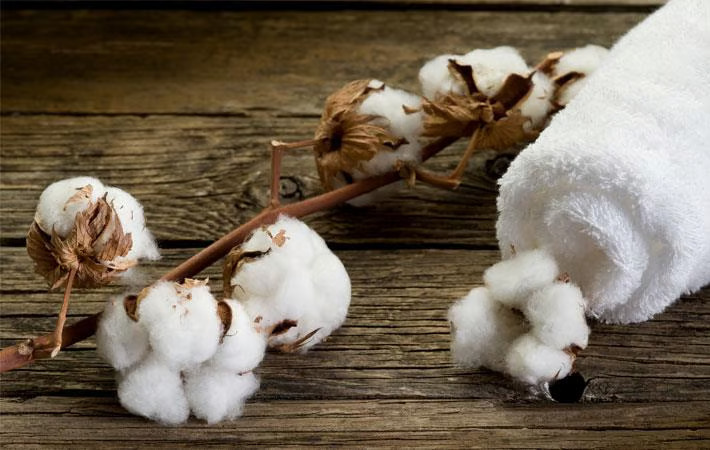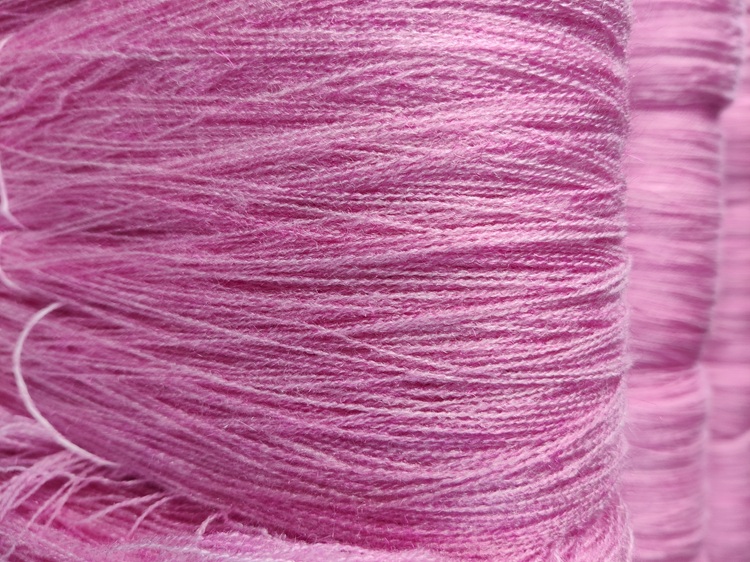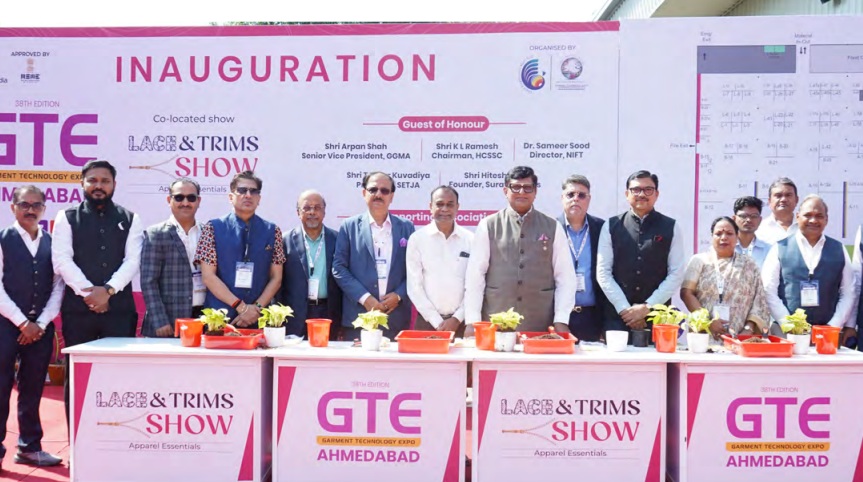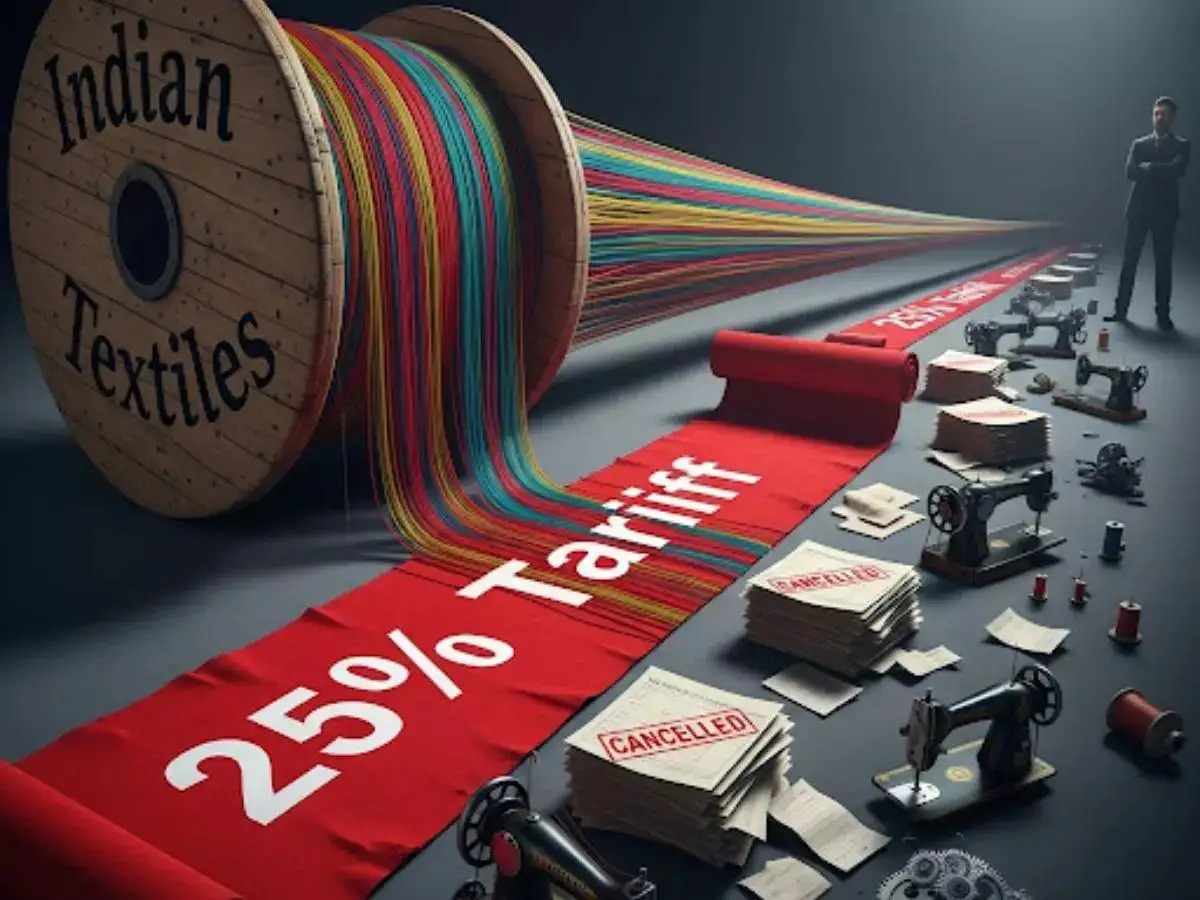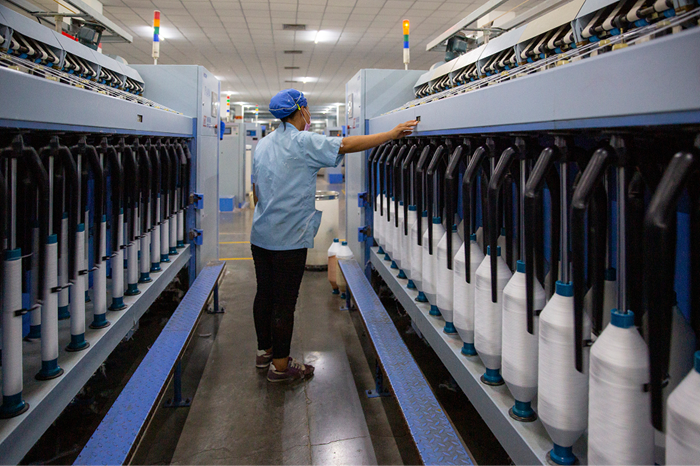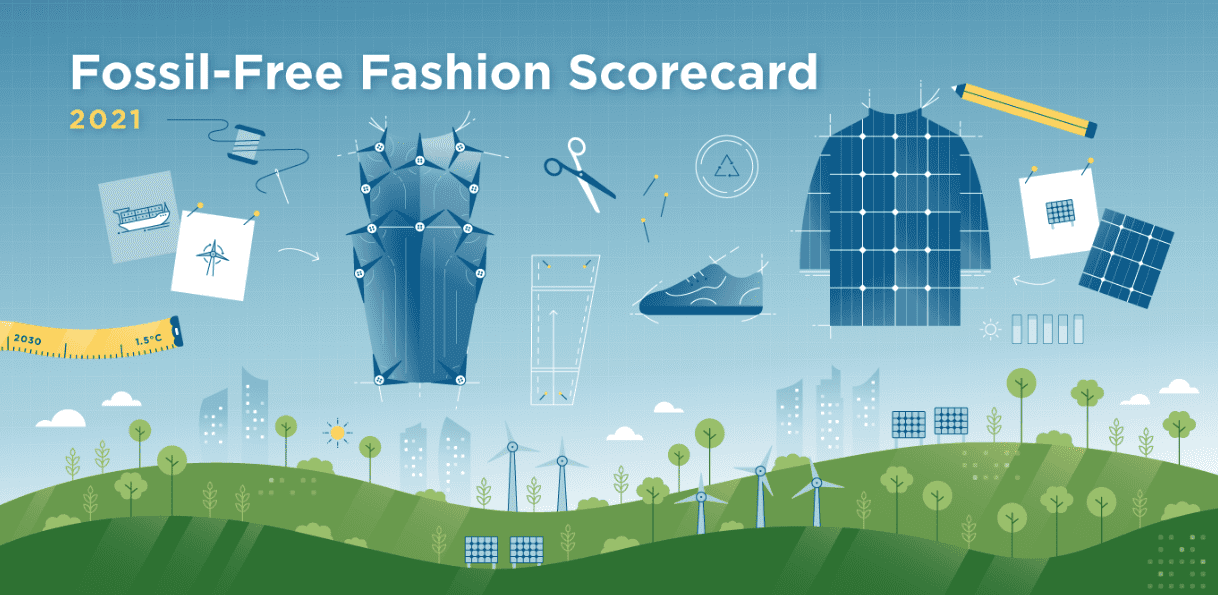FW
Despite the ‘Liberation Day’ tariff shockwaves initiated in April 2025, US textile and apparel imports have demonstrated remarkable resilience, stabilizing at $80.5 billion through the first three quarters. While the Trump administration’s aggressive reciprocal duties successfully slashed Chinese shipments by 27 per cent, the strategy failed to curb overall foreign production influx. Instead, the market witnessed a massive regional realignment, as US buyers bypassed 30-40 per cent tariff brackets by rerouting orders to lower-cost Asian corridors.
The vacuum left by China’s $11.7 billion contraction was rapidly filled by a 15.9 per cent surge in South-East Asian imports, which reached $24.3 billion. Vietnam and Bangladesh emerged as the primary beneficiaries of this tectonic shift in sourcing. Vietnam, now the US’s second-largest supplier, posted a 14.6 per cent increase, while Bangladesh saw an even sharper 18.2 per cent jump. Industry analysts at OTEXA suggest this ‘cluster sourcing’ model is a direct reaction to the universal 10 per cent baseline tariff, as retailers prioritize high-volume nations that offer the narrowest margin erosion.
The cost of resilience: Margin headwinds in 2026
While supply chains remained intact, the financial toll is mounting. High-profile retailers like Victoria’s Secret and Tapestry have reported projected tariff-related headwinds exceeding $260 million for the fiscal year. To avoid across-the-board price hikes, brands are accelerating ‘Endless Aisle’ and omnichannel technologies to optimize inventory and offset a 16.8 per cent average effective tariff rate - the highest since 1935. As the industry moves into 2026, the challenge shifts from finding new suppliers to absorbing a permanent 4 per cent to 7 per cent increase in landed garment costs.
The Office of Textiles and Apparel (OTEXA) is the primary federal body monitoring the health of the US fiber and garment industry.It is involved in tracking and publishing comprehensive data on US imports and exports of textiles, apparel, and footwear, while implementing trade preference programs. The organization monitors major global hubs including China, Vietnam, India, and the USMCA region (Mexico/Canada).
As the global textile recycling market hurtles toward a projected $11.88 billion valuation by 2030, Source Fashion is redefining the trade show experience. Launching at Olympia London from January 13-15, 2026, the new 'Fashion Deconstructed' zone marks a significant shift from passive sourcing to active, ‘material intelligence’ education. This immersive hub arrives as 72 per cent of mid-tier brands face mounting pressure to redesign collection strategies to meet strict new circularity metrics.
Scaling circularity through live tech demonstrations
The program's centerpiece-a live circular denim demonstration by LaundRE - highlights the industry's move toward waterless ozone and laser reprocessing. In an era where traditional denim finishing can consume up to 3,781 liters of water per pair, LaundRE’s tech-driven approach offers an 80 per cent reduction in water usage. These sessions allow designers to witness firsthand how post-consumer textiles are reconditioned, addressing the critical "transparency gap" where 59 per cent of publicly-listed brands still fail to provide basic supply chain traceability.
By integrating workshops from luxury salvage pioneers Elvis & Kresse and traditional handloom weavers, Source Fashion is capitalizing on the ‘Quiet Luxury’ trend, where craftsmanship is the ultimate differentiator. As Gen Z and millennial buyers increasingly prioritize durability, these workshops serve as a blueprint for the Rs 44.8 billion (approx. $5.3 billion) textile-to-textile recycling market expected by 2034. The initiative empowers retailers to move beyond greenwashing by understanding the ‘maker’ side of fashion, turning mending and upcycling from niche crafts into scalable, profit-driving ESG pillars.
Source Fashion is Europe’s premier destination for responsible sourcing, acting as a gateway between global audited manufacturers and high-profile retailers. The trade show connects designers and buyers with ethical manufacturers, raw material suppliers, and sustainable service providers across 25+ countries.
Valued at approximately $24.85 billion in 2024, the global swimwear market is projected to reach $39.28 billion by 2032 with a 5.2 per cent CAGR. The market is witnessing a critical shift where high-performance apparel is converging with fashion-led sustainability. This transformation, previously dominated by elite racing wear, is now extending into the broader recreational segment, blurring the lines between athletic function and lifestyle aesthetics. Brands are aggressively moving toward Direct-to-Consumer (D2C) models, driven by the online segment’s projected status as the fastest-growing distribution channel over the forecast period.
The material science of modern retail
Leading the charge are material innovations that address both athletic demands and environmental accountability. While Polyester remains the dominant material, holding a 34.8 per cent revenue share in 2023 due to its chlorine and saltwater resistance, the growth story is in recycled fabrics. Pentland Brands-owned Speedo, for example, is actively leveraging this trend, having increased the use of recycled materials in their main products to 61 per cent in 2022. This commitment is a direct response to a 30 per cent increase in consumer preference for sustainable products, according to industry surveys. This shift is not merely about ethics; it's about competitive edge, driving brands to launch eco-friendly lines, such as Speedo’s new Ocean Flex fabric made from GRS and RCS-certified recycled textiles.
The fashion-forward approach is also fueling regional growth, with Asia-Pacific holding the largest market share in 2024 at over 38.1 per cent and expected to remain the fastest-growing region. This surge is propelled by rising disposable incomes and rapid digital adoption. E-commerce platforms are enabling personalized shopping experiences, which is particularly beneficial for competitive gear where fit is paramount. Speedo’s largest online store, speedo.com, generated an estimated $43 million in revenue in 2024, showcasing a strategic focus on their D2C channel, which saw an estimated annual growth of 30-35% from the previous year. This investment in digital is essential for manufacturers seeking to control brand narrative and capture higher margins, especially as global trade dynamics necessitate more agile supply chains.
A globally recognized swimwear brand specializing in performance and competitive swimming apparel, including high-tech racing suits like the Fastskin line, Speedo International was. founded in Sydney, Australia in 1914. The brand has a rich history of Olympic success and technological firsts in swimwear. Its key markets span the globe, including North America, EMEA, and Asia-Pacific.
In its final Cotton: Review of the World Situation edition for 2025, the International Cotton Advisory Committee (ICAC) highlights, global cotton prices are increasingly decoupled from simple supply-demand economics. While the outlook for the 2025/26 season projects a rebound in global cotton trade by 2 per cent to 9.7 million tons - aided by steady mill demand in key textile hubs like Vietnam and Bangladesh - the long-term pricing stability hinges on structural factors. Lorena Ruiz, Economist, ICAC notes, environmental policies and evolving trade measures, rather than just macroeconomic cycles, are now the primary shapers of market sentiment. This means the textile and apparel sector must adjust to a new reality where raw material costs are highly sensitive to non-market interventions.
Sustainability and climate uncertainty in the fiber mix
ICAC data for the 2025/26 season projects, global production and consumption will hold steady at around 26 million tons and 25.7 million tons, respectively. However, the anticipated A Index price range (56 to 95 cents per pound, midpoint 73 cents) reflects extreme uncertainty. This volatility is driven by the producer's struggle to manage rising input costs and climate uncertainty. Furthermore, the report indirectly emphasizes the growing challenge from synthetic fibers; textile brands are increasingly sourcing sustainable alternatives, pressuring cotton producers to adopt advanced practices. ICAC's own focus on cutting-edge technologies like virtual reality training for cotton researchers underscores the industry's need for radical innovation to ensure cotton’s continued sustainability against fierce competition in the global fibre market.
Formed in 1939, the ICAC is a United Nations-recognized intergovernmental commodity body comprising cotton-producing, consuming, trading, and investing countries. It serves as a clearinghouse for technical and economic information to maintain a healthy world cotton economy. Key activities include providing statistical transparency on global supply and demand (including beginning stocks, production, and mill use data) and acting as a forum for discussing international cotton issues.
India's second-largest employer, the textile and apparel sector faces a fierce fight for global competitiveness, leading the Confederation of Indian Textile Industry (CITI) to urgently demand the permanent removal of the 11 per cent import duty on cotton. This plea comes as the sector reels from devastating external trade barriers, most notably the 50 per cent tariff imposed by the US - India’s largest export destination - which has been in effect since August 27, 2025. This tariff wall, compounded by a similar new 50 per cent duty from Mexico, contributed to a steep decline of nearly 12.9 per cent in textile and apparel exports in October 2025 compared to the previous year. The industry requires cost parity to offset these punitive duties.
Bridging the price gap for global orders
The necessity for duty-free raw material is magnified by two crucial domestic factors: a projected decline in cotton output for the current season (2025-26) and persistent concerns over fiber quality, often requiring mills to import high-grade, contamination-free cotton (about 6 per cent of total production, or 2 million bales annually) to meet global buyer specifications. Ashwin Chandran, Chairman, CITI, stressed, removing the duty would reduce the divergence between domestic and global prices and restore the competitiveness of India's spinning and textile industries. While the government temporarily exempted the duty until December 31, 2025, CITI argues, a permanent waiver is essential to provide cost stability, prevent job losses, and allow the MSP mechanism to function without disrupting downstream market costs.
An apex industry body representing the entire organized textile value chain in India, CITI is mainly involved in advocating for policies that enhance the sector’s global competitiveness and domestic growth. The Indian textile industry contributes approximately 2 per cent0 of the country's GDP and is critical to employment, with the goal of reaching $100 billion in exports by 2030. CITI is currently focused on leveraging government schemes like the Production Linked Incentive (PLI) and the PM MITRA Parks to modernize infrastructure and diversify the product base, aiming to stabilize the sector amid international trade volatility.
The textile and apparel industry is currently facing a digital imperative to comply with a wave of stringent EU sustainability regulations, most notably the Corporate Sustainability Due Diligence Directive (CSDDD). This mandate, which forces large firms to trace and mitigate human rights and environmental harms in their direct supply chains, is directly fueling the demand for specialized ESG software.
To meet this compliance crunch, two specialized firms, Rajesh Bheda Consulting (RBC) and Redefine Information Technologies, have strategically partnered. The collaboration aims to merge RBC’s deep, thirty-year expertise in apparel supply chain transformation with Redefine's digital platform, Sattva – Safe & Sustainable. This fusion is critical, as effective ESG implementation—especially for complex requirements like supply chain mapping—demands both domain knowledge and technological scalability. Maneesha Sharma, RBC notes, sustainability is now integral to how we think, operate, and engage," underscoring the shift from isolated social initiatives to core business strategy.
A solution for Tier I transparency
The partnership directly addresses the industry's pervasive challenge: the lack of systematic documentation and monitoring. As the CSDDD's initial focus is heavily on direct suppliers (Tier 1), the Sattva application provides textile manufacturers and brands with a transparent, structured mechanism to report ESG performance. By integrating consultancy-led best practices into a user-friendly digital application, the collaboration aims to not only prevent non-compliance penalties -which could include fines or public naming - but also to unlock operational benefits like reduced waste and enhanced resource efficiency across the value chain.
Rajesh Bheda Consulting (RBC) is a management consulting firm headquartered in Gurugram, India, specializing in enhancing the competitiveness and performance of organizations within the global fashion and lifestyle industry. They provide consulting, training, and capacity building services focused on operational excellence, supply chain improvement, and strategic performance enhancement, with a strong commitment to Sustainable Development Goals.
India’s textile and apparel export sector is staging a significant late-year recovery, driven overwhelmingly by the value-added apparel segment. While the cumulative exports for the fiscal year (April-November ’25) remain marginally in the red at -0.35 per cent compared to the previous year, November ’25 shipments delivered a powerful monthly growth of 9.40 per cent overall. This turnaround was spearheaded by Apparel, which grew by an impressive 11.27 per cent in November, easily surpassing the 7.99 per cent rise in the base textiles segment. This monthly data offers much-needed optimism following a period where cumulative Textiles exports recorded a -2.27 per cent degrowth.
Value-addition and market diversification drive growth
The robust performance in Ready-Made Garments (RMG) highlights the success of product value-addition initiatives. This segment, which saw cumulative growth inch up to 2.28 per cent (April-November ’25), is benefiting from the government’s comprehensive strategy to diversify beyond traditional Western buyers. Data shows strong momentum in non-traditional markets like Hong Kong (+69 per cent) and Egypt (+27 per cent) in H1, FY26. According to the Confederation of Indian Textile Industry (CITI), the focus is now on manufacturing high-value man-made fibre (MMF) apparel and technical textiles, aligning with the revised Production Linked Incentive (PLI) Scheme. Amendments in October ’25 reduced the minimum investment limit by 50 per cent and lowered the incremental turnover criteria, aiming to boost investment by Rs 2 lakh crore and reduce entry barriers for MSMEs seeking to scale up in these advanced segments.
The structural shift is towards future-ready textiles. The Technical Textiles segment, which is supported by the PLI scheme and the establishment of PM-MITRA Parks, represents a major opportunity. These products, used in automotive, healthcare, and industrial applications, are projected to grow substantially. This move up the value chain, away from basic cotton yarn, is key to sustained growth. A strong signal of commitment is the India-UK Comprehensive Economic and Trade Agreement (CETA), signed in July 2025, which aims to reduce trade barriers and enhance market access, a crucial step for achieving the sector’s long-term export goals.
Dior has unveiled its flagship store- House of Dior Beijing in China. Designed by Pritzker Prize laureate Christian de Portzamparc, the store is a strategic vote of confidence in China's stabilizing luxury market. It was unveiled in Sanlitun alongside a cluster of other major LVMH openings.
With its iconic, petal-shaped façade and imperial golden glass tiles, the five-storied structure is positioned to transform retail into a high-culture destination. The store's integrated elements, from the first looks by Jonathan Anderson, Creative Director and the first designer since Christian Dior to helm all three divisions: women's, men's, and couture to the Monsieur Dior restaurant run by Chef Anne-Sophie Pic, reflect a shift from transactional shopping to immersive, art-de-vivre experiences.
The Anderson effect and financial strategy
The debut of Anderson’s vision, which notably includes a modern reframing of house codes like the Lady Dior bag and Bar Jacket silhouettes, aims to inject newness and drive consumption among China's affluent Gen Z and Millennial shoppers who value cultural relevance. Following a challenging 2024 for the broader LVMH Fashion & Leather Goods group in China, this substantial investment targets a market recovery. Analysts predict, China will account for 40-45 per cent of global luxury sales by 2025. By placing its full universe - from haute couture to La Collection Privée fragrances - in this single, monumental, 360-degree visible location, Dior is elevating its brand narrative to capture renewed, albeit more cautious, consumer spending. This strategy is critical to leveraging the improved trend seen in the Rest of Asia region in the latter half of 2025.
Founded in 1946 by Christian Dior, the French luxury house is the controlling shareholder of LVMH Moët Hennessy Louis Vuitton, the world's largest luxury group. Dior operates across multiple product categories, including Women's Ready-to-Wear (RTW), Couture, Leather Goods, Accessories (including the iconic Lady Dior and Saddle bags), Fine Jewelry, Timepieces, and Fragrances/Beauty (La Collection Privée). The brand is globally present, with its largest markets including Europe, the US, and Asia, where Greater China is a primary growth engine.

When Washington set out to ‘reclaim manufacturing’ through punitive tariffs, it was envisioned as a patriotic reset one that would bring back the hum of American sewing machines and the pride of Made in USA labels. But the reality unfolding across global apparel boardrooms tells a very different story. The US administration’s tariff regime especially on imports from major suppliers like China, India, and Brazil has done little to trigger domestic production. Instead, it has ignited a global supply chain exodus, with American brands quietly redrawing their sourcing maps toward tariff-resilient countries.
In effect, tariffs have become a ‘fixed cost of doing business’, not a tool for reshoring. And the only sustainable corporate response has been diversification, innovation, and scientific compliance not domestic revival.
The diversification imperative: Flexibility as the new efficiency
The modern sourcing map for US-facing apparel brands resembles a patchwork quilt no longer dominated by China, but distributed across a constellation of smaller, nimble suppliers in Vietnam, Jordan, India, and Eastern Europe. For sourcing executives, diversification is no longer optional; it’s a risk strategy. Facing tariffs as high as 50 per cent on India and Brazil, and higher rates on China, companies are building multi-country manufacturing footprints to avoid single-point failures. “You don’t beat tariffs by making everything in America you beat them by never depending on one country again,” says a sourcing head at a leading US activewear brand.
Table: Shifts in US apparel import share (2020–2025)
|
Country |
Import share (%) 2020 |
Import share (%)2025 |
Change (bps) |
Comment |
|
China |
36.8 |
22.5 |
-1,430 |
Sharp decline due to cumulative tariffs |
|
Vietnam |
13.4 |
18.9 |
+550 |
Key beneficiary of relocation |
|
India |
6.7 |
9.8 |
+310 |
Gains from preferential sourcing deals |
|
Jordan |
2.9 |
5.2 |
+230 |
Expanding under QIZ and FTA frameworks |
|
USA (domestic) |
2.1 |
2.4 |
+30 |
Negligible movement despite policy intent |
The data illustrates that while Asia remains dominant, the geography within Asia is shifting. Vietnam and India have capitalized on the tariff turbulence, while domestic US manufacturing has failed to capture any meaningful uplift.
Treating tariffs as a permanent variable
Rather than lobbying for exemptions, most firms are institutionalizing tariff costs. Internal documents from several US importers describe these duties as fixed variables, which is costs to be managed, not avoided. This has given rise to supplier-partnering models, where brands and vendors share the burden across logistics, packaging, and material margins. For example, bulk order consolidation to reduce freight costs or lightweight packaging to minimize shipping weight and early-payment incentives to offset cash flow constraints. The focus is now on absorbing, not escaping, tariffs with operational efficiency serving as the real currency of resilience.
The Made in USA mirage
Despite the policy rhetoric, the hard truth is that us apparel production continues to shrink. tariffs on imported inputs fibers, yarns, and trims have created a tariff-on-tariff trap. “Even if you cut and sew in the us, your yarns, dyes, and zippers still cross borders and still attract tariffs,” notes a textile economist at the American Apparel & Footwear Association.
Table: US textile and apparel manufacturing output index (base year: 2015 = 100)
|
Year |
Output Index |
YoY Change (%) |
|
2018 |
94 |
-1.2 |
|
2020 |
90 |
-4.3 |
|
2022 |
86 |
-4.4 |
|
2025 |
83 |
−3.5 (est.) |
Even after years of tariffs intended to protect domestic industry, production continues to decline, suggesting that import barriers alone cannot rebuild an industrial base that depends on global raw material inputs.
The innovation shield, science, sustainability, and circular design
As trade unpredictability grows, innovation is emerging as the ultimate tariff shield. Forward-looking firms are now investing in materials and models that make their supply chains both circular and classification-proof.
Tariff-resilient materials: Firms are developing modular, decentralized materials that can be produced closer to end markets. This includes sustainable hemp blends, bio-based fibers, and lab-grown alternatives that qualify for lower tariff classifications under the Harmonized Tariff Schedule (HTSUS).
Circular value chains: Companies are shifting toward textile-to-textile recycling starting production with waste rather than virgin fiber. This not only cuts raw material dependency but also isolates the value chain from tariff volatility.
Compliance through science: The intersection of trade regulation and ethics is pushing brands toward scientific verification tools like stable isotope and DNA traceability to prove raw material origin. This converts compliance from a bureaucratic headache into a strategic advantage, reducing detention risks and misclassification penalties.
Table: Innovation pathways in US apparel sourcing (2023–25)
|
Strategy |
Adoption Rate (%) |
Primary Impact |
|
Sustainable / Hemp Blends |
42 |
Tariff rate reduction & HTS reclassification |
|
Textile Recycling Integration |
35 |
Raw material insulation |
|
Stable Isotope Verification |
18 |
Compliance proof, reduced detention risk |
|
Onshore Digital Sampling |
27 |
Faster, low-volume prototyping near H |
The data underscores a clear shift from tariff avoidance through geography to tariff resilience through innovation. Science and sustainability are now supply chain instruments, not marketing slogans.
The 2025 sourcing scenario highlights: tariffs have succeeded in changing trade routes, not in reshoring production. The result is a more fragmented but agile global ecosystem where sourcing decisions are driven less by patriotism and more by precision. American brands are building flexible, tariff-resilient networks that stretch from Vietnam’s industrial parks to India’s cotton hubs, from Jordan’s QIZ zones to Romania’s nearshoring corridors. In short, the world has adapted faster than the policy. The Made in USA ideal remains powerful in rhetoric but in practice, it’s Made for the USA that now defines the global supply chain of 2025.
Philippines’ textile and apparel (T&A) exports are projected to grow by 2 per cent-5 per cent in 2026, building on an expected revenue increase this year. According to the Foreign Buyers Association of the Philippines (FOBAP), this optimism is fueled by government efforts to reduce US tariffs and industry expansion into new markets.
Robert Young, President, FOBAP, who is also a trustee for the textile sector of the Philippine Exporters Confederation Inc. (Philexport), stated, revenues from apparel and garment exports in 2025 are expected to rise to $1 billion, from approximately $900 million last year. Young noted, advance deliveries helped mitigate the impact of the current US tariff.
A key factor driving the positive outlook is the government’s push to secure exemptions from the current US tariff, which stands at 19 per cent for most Philippine goods entering the country. Frederick Go, Finance Secretary recently indicated the government’s hope to eliminate this tariff for garment, travel accessories, and furniture exports, following the precedent set by key semiconductor and agricultural goods that are already exempt.
Young stressed the industry's need for stronger market access through trade agreements. He pointed out, the Philippines lags behind its neighbors, having the ‘least number of FTAs among the ASEAN countries,’ and urged the government to pursue more Free Trade Agreements with regions like the European Union, Canada, and Australia to support continued export growth.
Furthermore, to boost competitiveness, industry players are requesting government subsidies to offset high operating costs, particularly for power and labor. Young mentioned ongoing discussions with the Department of Labor and Employment (DOLE) to potentially secure tax deductions or other concessions tied to export performance. The successful reduction of the US tariff and expansion of the FTA network are seen as critical factors determining the industry’s success in 2026.


